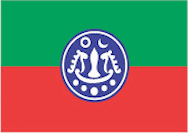Rohingya - 2015
 A crisis began in May 2015 when Thailand disrupted longstanding human trafficking networks that targeted Rohingya. The people smugglers fled, leaving thousands of boat people adrift at sea. By mid-May 2015, thousands of refugees and migrants, mostly Rohingya from Myanmar and Bangladesh, had been rescued or swam ashore in Southeast Asian countries after being abandoned at sea by human traffickers. Thousands more were thought to be adrift, with dwindling supplies. After initially refusing to help the so-called boat people, Indonesia and Malaysia on 20 May 2015 agreed to provide humanitarian aid and temporary shelter to the estimated 7,000 stranded migrants, provided they are resettled within one year with the assistance of the international community.
A crisis began in May 2015 when Thailand disrupted longstanding human trafficking networks that targeted Rohingya. The people smugglers fled, leaving thousands of boat people adrift at sea. By mid-May 2015, thousands of refugees and migrants, mostly Rohingya from Myanmar and Bangladesh, had been rescued or swam ashore in Southeast Asian countries after being abandoned at sea by human traffickers. Thousands more were thought to be adrift, with dwindling supplies. After initially refusing to help the so-called boat people, Indonesia and Malaysia on 20 May 2015 agreed to provide humanitarian aid and temporary shelter to the estimated 7,000 stranded migrants, provided they are resettled within one year with the assistance of the international community.
In June 2015 Myanmar resumed a process that could end up granting citizenship to the Rohingya people who for years had been without a country. But the plan was controversial and would be scrutinized far from impoverished Rakhine state, the epicenter of the ethnic conflict that has sent thousands fleeing throughout Southeast Asia.
The ethnic conflict can be boiled down to two words: Rohingya or Bengali. The two names signify a fight over something much larger in Myanmar; identity, citizenship and a sense of belonging.
Chief Minister Muang Muang Ohn said the term Rohingya implies an ethnic claim that involves territory and is much more complicated than just citizenship. He said ultimately, they must make a choice. “If those people, Bengali, participated in the citizenship verification process and if they got citizenship status, they would get automatic rights as a citizen to travel freely,” he said. “But some people are still resisting to accept the term and participate in the process," he said. "So the question is, do you want citizenship or do you want Rohingya ethnicity?”
|
NEWSLETTER
|
| Join the GlobalSecurity.org mailing list |
|
|
|

